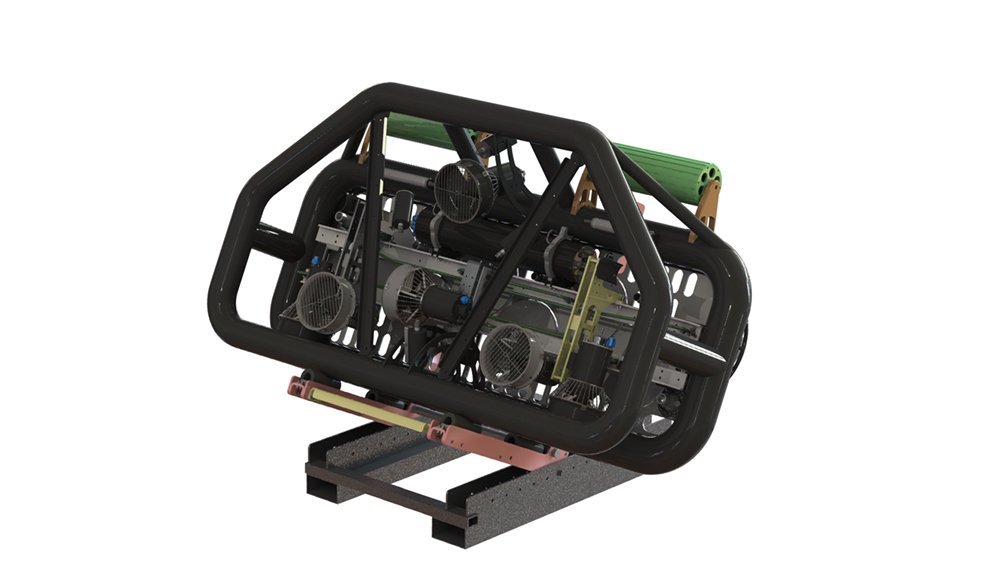
Four years ago, AKVA group and the ROV manufacturer Sperre launched the first remotely free flying net cleaning system. At the time it was not uncommon to apply whatever pressure available from the HP pumps onboard the service vessels to the nets, in many cases well over 200 bar. The combination of net cleaners using belts as propulsion crawling on the nets, and high pressure applied to the nets, turned out to result in significant wear and tear on the nets and net mesh. Today we know better.
Remotely operated free flying net cleaning systems first saw the light of day with the launch of the FNC8 (Flying Net Cleaner) at the end of 2016. It was the first of its kind in the world and has radically changed our entire approach to net cleaning. A few others have since developed systems that can move freely in and around the net pens. This is yet another aquaculture process that has been irrevocably transformed from manual work to a remotely operated operation.
More than just net cleaning
A remotely operated system provides opportunities for new applications that boost operational efficiency in and around the net pens. The FNC8 is equipped with an effective lighting system, cameras, and video logging, making it an efficient inspection tool down to 75 metres. Any anomaly discovered during net inspections can easily be tagged with an exact location either within the pen or on the net itself. This makes subsequent repair work much easier.
The MCT (Multi Cleaning Tool), is a bolt on function to clean the ancillary equipment installed in and around the net pens, such as hamster wheels, feed hoses and mooring lines etc. O2 sensors are available on the FNC8 to better monitor the seawater condition during the cleaning process.
Well suited for ASC-certified locations
The path to the current system has not been easy nor straightforward, and this newcomer had a steep learning curve to say the least. Quite a few upgrades and improvements had to be done on the system based on the feedback we got from our customers.
At that time, it was it not uncommon to clean the nets using whatever pressure available from the high-pressure water pumps on board the service vessels. The nets were pressure jetted at a pressure well above 200 bar, which caused significant wear and tear on the nets. Today we know better and have an entirely different understanding and approach of these parameters. Experience has shown us that the key to a gentle net cleaning operation lies in the least applied pressure and high-water flow. A typical set-up today is in the range of 65 to 90 bar with water flow between 350 -400 (or more) L/min. This set-up enables us to meet all the requirements for sensitive cleaning as set out in ASC requirement 4.7.
Loose fouling
There is no shortage of challenges, and we are working just as intensively today to enhance our products and services. We are currently testing a system for collection of loose fouling particles caused by the net cleaning process and we are confident that we will have a good solution to this problem soon.
Currently the authorities have stipulated no requirements concerning the presence of loose fouling, but our aim is, as always, to solve problems and create solutions. We will do our very best to minimise particles contaminating the water in the net pens.
We believe it is important to crack this puzzle, and we will not give in before we have found a solution to the problem.